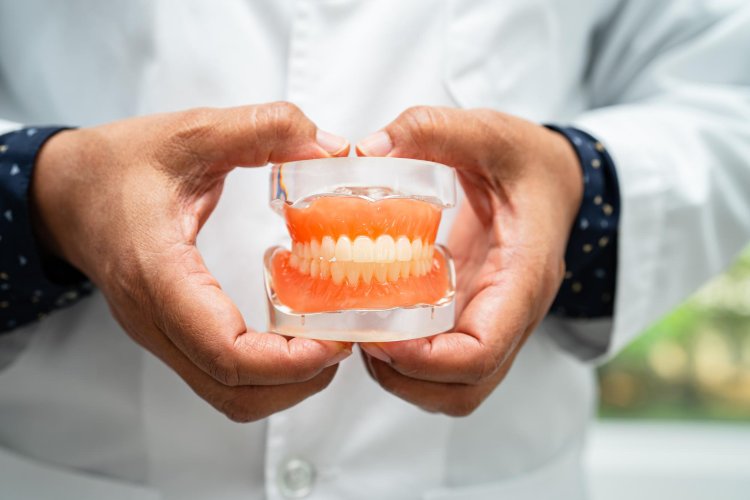Dental Prostheses: Enhancing Oral Health and Quality of Life
Dental prostheses, also known as dental appliances or dental restorations, are vital components of modern dentistry aimed at restoring oral health, function, and aesthetics in individuals with missing teeth. Tooth loss can occur due to various reasons, including dental decay, gum disease, trauma, or congenital abnormalities. Regardless of the cause, dental prostheses offer viable solutions to replace missing teeth, enabling individuals to regain their ability to chew, speak, and smile confidently. This comprehensive overview explores the different types of dental prostheses, their applications, materials, fabrication processes, and impact on oral health and quality of life.

Understanding Dental Prostheses
Dental prostheses are custom-made devices designed to replace missing teeth and restore oral function, aesthetics, and phonetics. They are tailored to each patient's unique oral anatomy and specific needs, ensuring a precise fit and natural appearance. Dental prostheses can be broadly categorized into two main types: fixed and removable prostheses.
Fixed Dental Prostheses
Fixed dental prostheses are permanent restorations securely attached to the natural teeth or dental implants within the mouth and cannot be removed by the patient. They are commonly used to replace one or more missing teeth and are ideal for cases where the remaining natural teeth provide adequate support for the prosthesis. Examples of fixed dental prostheses include dental crowns, bridges, and veneers.
Dental Crowns
Crowns, also known as caps, are tooth-shaped restorations placed over damaged, decayed, or weakened teeth to restore their shape, size, strength, and appearance. They are fabricated from various materials, including porcelain, metal, or a combination of both, depending on the patient's specific needs and preferences.
Dental Bridges
Bridges are prosthetic devices used to replace one or more missing teeth by anchoring artificial teeth (pontics) to the adjacent natural teeth or dental implants. They restore chewing function, prevent the shifting of remaining teeth, and maintain the alignment of the dental arch.
Dental Veneers
Veneers are thin shells of tooth-colored material, usually porcelain, bonded to the front surface of teeth to improve their appearance. They are commonly used to correct issues such as discoloration, chips, cracks, or minor misalignments, enhancing the overall aesthetics of the smile.
Removable Dental Prostheses
Removable dental prostheses are prosthetic devices that can be taken out of the mouth by the patient for cleaning and maintenance purposes. They are used when the remaining natural teeth cannot provide sufficient support for fixed prostheses or in cases of extensive tooth loss. Examples of removable dental prostheses include complete dentures, partial dentures, and implant-supported overdentures.
Complete Dentures
Complete dentures are removable prosthetic devices used to replace all of the natural teeth in one or both dental arches (upper and lower). They consist of artificial teeth set in a flesh-colored acrylic base that rests directly on the gums, restoring the ability to chew, speak, and smile confidently.
Partial Dentures
Partial dentures are removable prosthetic devices used to replace one or more missing teeth when some natural teeth are still present in the dental arch. They consist of artificial teeth attached to a metal or acrylic framework that clasps onto the remaining natural teeth for stability and support.
Implant-Supported Overdentures
Implant-supported overdentures are removable prosthetic devices anchored to dental implants surgically placed in the jawbone. The implants provide stability and retention for the dentures, preventing them from slipping or shifting during chewing or speaking.
In conclusion, dental prostheses are indispensable tools in modern dentistry for restoring oral health, function, and aesthetics in individuals with missing teeth. Whether fixed or removable, these prosthetic devices are tailored to each patient's specific needs and offer a lifelike appearance, comfortable fit, and improved oral function. By replacing missing teeth and restoring oral function, dental prostheses significantly enhance the quality of life for individuals affected by tooth loss, enabling them to enjoy a healthy, functional, and beautiful smile.
Disclaimer
The information provided in this article is for educational purposes only and should not be considered medical advice. If you have any health concerns or are experiencing symptoms, it is important to consult with a healthcare professional, such as a doctor or clinic, for proper diagnosis and treatment. Always seek the advice of your doctor or other qualified health provider with any questions you may have regarding a medical condition. Do not disregard professional medical advice or delay in seeking it because of something you have read in this article.
Hashtags
#DentalProstheses #ToothReplacement #DentalAppliances #ToothRestoration #FixedProstheses #RemovableDentures #OralHealth #ToothLossSolutions
What's Your Reaction?





















